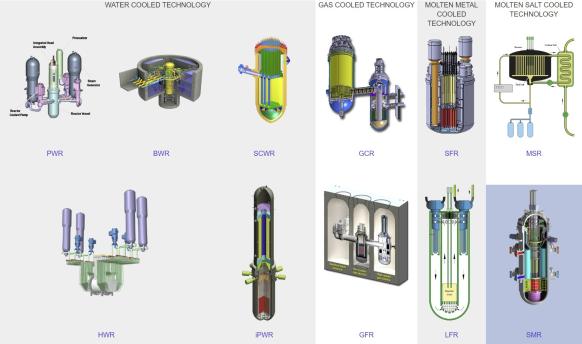Global licensing, regulatory harmonization essential for SMR success
The harmonization of licensing and regulatory practices and open collaboration between national nuclear power regulators is essential to the successful global deployment of next generation small modular reactors, regulators and industry associations say.

Related Articles
There are more than 70 SMR designs and concepts in development worldwide and the technology, defined as advanced reactors that generate up to 300 MW per module, offers a new paradigm for nuclear power generation.
Unlike the older, gigawatt Gen III reactors, SMRs can be deployed in countries with smaller grids and less nuclear experience because they, almost completely, can be built in factories and shipped and installed by module, and they boast passive safety design features.
Meanwhile, their modularity helps reduce costs through economies of series production, and their size makes them easier to finance than larger plants.
“However, such technologies also bear risks and challenges that need to be addressed,” the International Nuclear Regulators’ Association (INRA) warned in a joint statement in May.
The potential wide-spread adoption of SMRs and advanced reactors into regions outside of the INRA umbrella to countries with limited nuclear power experience makes regulatory and licensing harmonization important, both for successful development of the industry and to address safety and non-proliferation concerns.
The INRA is ready to support a collaborative approach for the regulatory assessments of SMR technologies in the most efficient and effective way, the collective, which includes the heads of the nuclear regulatory authorities from Canada, France, Germany, Japan, the Republic of Korea, Spain, Sweden, Britain, and the United States, said.
“INRA members whose countries are pursuing new nuclear programs are committed to proactively collaborate on generic reactor design assessments and licensing and support national regulatory reviews in (re)embarking nations with new nuclear ambitions,” the statement said.
Working together
For now, the greatest cooperation can be seen between countries that already have a mature nuclear power industries.
In North America, Ontario Power Generation (OPG)’s selection of GE Hitachi’s BWRX-300 technology for the proposed Darlington New Nuclear Project has prompted the Canadian nuclear regulator, the CNSC, and the U.S. Nuclear Regulator Commission (NRC) to go through their Vendor Design Review process and pre-application activities at the same time as part of a joint Memorandum of Cooperation (MoC).
“This MoC has led to the sharing of regulatory insights from technical design reviews. Our two countries have also looked at leveraging common approaches for reviewing new build license applications,” says Caroline Ducros, Director General of the Directorate of Advanced Reactor Technologies at the CNSC.
“We are laying the groundwork for even greater collaboration, as we move towards the licensing phase. We have created a five-party working group with the CNSC, the U.S. Nuclear Regulatory Commission, Ontario Power Generation, Tennessee Valley Authority and GE-Hitachi. The progress of this group is discussed among CEOs of each of these parties.”
The United Arab Emirates and South Korea have agreed to expand nuclear cooperation after the construction of the Barakah nuclear power plant in the UAE, its first move into nuclear power and featuring four Korean-designed APR1400 reactors, including an administrative agreement between Korean and UAE regulators.
The cooperation is one that many regulators are seeing as incredibly positive, especially for nuclear newcomer countries, according to Ducros.
Planned SMR deployment in Poland, Czech Republic, Japan, South Africa, Romania, and Denmark, to name but a few, highlight the need for international accords on how these reactors can be regulated.
“Harmonization and collaboration among regulators can provide greater clarity to industry in terms of developing designs that meet the demands of multiple jurisdictions. Common designs can still take into consideration environmental variances, including for example seismicity and cooling water temperatures,” says Ducros.
“The way we describe our job at the CNSC, as a science-based regulator, is to protect people and the environment from risk – not from progress. We work with like-minded regulators which leads to better, quicker, and more informed decisions without compromising on safety.”
Advanced Reactors in development
(Click to enlarge)
Source: International Atomic Energy Agency
Same playbook
To usher in a new industry of nuclear power generation it’s important all countries are working from the same playbook when it comes to measurement standards and safety.
Standards must be equal, or equivalent, with the French and Australians and British using mechanical engineering codes that reflect the ASME codes used in North America, and measurements – mostly metric worldwide of kilograms and meters, but some still running imperial systems of pounds and inches – must be aligned.
Also, all parties must use equivalent safety analysis report (SAR) processes, mostly laid out by the International Atomic Energy Agency (IAEA), based on the practical experience of member states and produced through international consensus, the IAEA says.
Full alignment, such as that employed by the international aviation industry with a single, global regulatory standard, is unlikely to emerge for nuclear power, however, due to a wide range of national energy regulations.
“I don't think you can ever achieve 100% uniformity, just because there are so many specific laws, regulations, and requirements that each country, for their own purposes, be it social or economic or environmental, impose on energy systems,” says Senior Policy Fellow at Argonne National Laboratory Paul Dickman.
At the very least, authorities must agree on harmonized and equivalent SARs which can serve as a solid base for agree-upon standards, says Dickman.
“If you think about putting up a building, you better have the foundation established before you start building anything else and I view the SARs and the harmonization of standards and codes as fundamental,” he says.
By Paul Day

